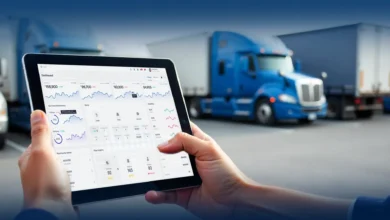Alexander Ostrovskiy: Water Conservation Innovations in Urban Settings
The rise in the global population, especially in urban centers, presses demand on water as a basic yet scarce commodity. With high infrastructure density and high consumption habits, cities find increasing pressure to adopt sustainable solutions for the management of water.
Water conservation in cities is not only an ecological imperative but also a pragmatic step toward strengthening the resilience of these metropolitan cities in their growth process. With climate change gaining full speed, even extreme weather conditions-like drought and further compromise urban water security. The need to adopt effective water conservation practices thus becomes highly important from both ecological and economic perspectives.
This paper from Alexander Ostrovskiy discusses some of the innovative and exciting new approaches currently being developed in order to enhance sustainable urban water use. Approaches discussed will include smart systems, green infrastructure, and public engagement within the urban environment.

Smart Systems
Probably the most innovative solutions devised for the conservation of water in urban areas would be the rise of smart systems. Through these systems, technology is exploited to get maximum utilization of water and then search out inefficiencies. Everything one can imagine may be well executed in real life – from automated irrigation and leak detection technologies down to advanced metering solutions. Learn more about smart water systems on the website
Automated Irrigation and Leak Detection
On the other hand, automated irrigation systems make use of current weather and moisture in the soil- or even the water need of the plant-to adjust the schedule for watering. In this regard, there is an appropriate application of water when needed through sensors and weather forecasting tools to achieve efficiency. Leak detection technology installed within irrigation and plumbing systems can detect water losses much earlier and, as such, is able to prevent waste of water, in return reducing repair costs.
Smart Meters for Real-Time Usage Tracking
In recent years, smart meters have revolutionized how water consumption has been monitored across cities. These meters, through their ability to measure in real-time, actually make utilities and consumers correctly feel the usage pattern, inclusive of leak patterns if any. These smart meters will send alerts on the instance of anomaly or leakage into homes or businesses by pointing to unusual usage. That would, of course, spur intervention that’s pretty fast. Smart meters also raise more awareness in consumers and provide them with the ability to use water responsibly, taking control of their consumption.
Green Infrastructure
Green infrastructure can generally be defined as the incorporation of natural systems or processes into built environments in a way that manages water resources in a manner more compatible with natural hydrologic regimes. In so doing, it more often than not emulates the natural relationship between hydrological processes and co-benefits such as increased biodiversity, improved air quality, and increased aesthetic value for cities.
Rain Gardens and Permeable Pavements
Rain gardens, or bio-retention systems, are specifically designed to catch rainwater runoff and filter it before it reaches the storm drains. Native plants and specially prepared mixtures of soil in the gardens make the absorption of water better, hence lightening the load in urban drainage systems and removing all possibilities of flooding. They also provide for the local recharge of aquifers as they let the rainwater percolate into the ground and reduce the chances of the pollution of water bodies. They are of particular use in those cities that have a high proportion of impervious surfaces like asphalt and concrete that in turn reduces the permeability of the ground to water and, in turn, makes stormwater management worse.
Urban Water Recycling Systems
The second most important characteristic of green infrastructure is the design conurbation of water recycling systems, and this approach attempts to recycle the water in the municipality itself.
Overview of innovative solutions.
A significant amount of the water being utilized in an urban environment is used for non-potable purposes such as irrigation, cooling of industrial procedures, and cleaning. These are just the very same reasons why the cities are now adopting greywater recycling wherein wastewater from the sink, shower, and laundry is treated and then reutilized for other needs. Similarly, rainwater harvesting systems collect and store rainwater for later use in non-potable applications. Recycling of urban water reduces demands on freshwater supplies and can have added advantages by providing stormwater management, thereby reducing environmental impacts together with a decrease in wastewater discharged.
Public Engagement
Community adoption of innovations in water conservation is considered its eventual success. It plays a vital part in the encouragement of sustainable practices concerning the use of water raises public awareness of water challenges and causes behavior change.
Community Education on Water Conservation
Of all the powerful tools for change, education plays a great role.
Most of the cities have education campaigns, which raise awareness amongst the citizens over the need to conserve water besides pointing out the practical ways to reduce consumption. Generally, the changes that eventually make a difference revolve around relatively small things: the fixing of leaks, the installation of appliances that use water efficiently, and also techniques employed in landscaping while using the minimum amount of water. Knowing how conservation benefits them, cities can institute a culture of sustainability that goes beyond the individual household to neighborhoods and communities as a whole. Incentives for Sustainable Practices Cities are also offering incentives to further encourage water conservation by individuals and businesses.
These come in terms of rebates on installing water-efficient appliances, subsidies on rainwater harvesting systems, and even discounts on water bills for those showing reduced consumption. Some municipalities have thus come up with a tiered pricing system wherein higher use of water has to pay higher in order to make the people move towards efficient water usage. These economic incentives help balance out the initial cost of adoption of the conservation technologies. It makes sustainable practices available to more of the populace.
Building resilient urban water systems.
With the rise of urban populations and increased intensification of the global climate crisis, cities need to put into action sustainable water management strategies. The paper discusses smart systems, green infrastructure, to citizen engagement with these different roles regarding ensuring efficient water use and limitation of wastes; all aspects are considered while building the road for creating a truly water-secure and sustainable future through effective technology with natural interaction within this community. It’s not enough to put in place such solutions but also to inculcate the same kind of resolve to use water in a manner that is not over-exploitative and wasteful of such a precious commodity in urban centers.




